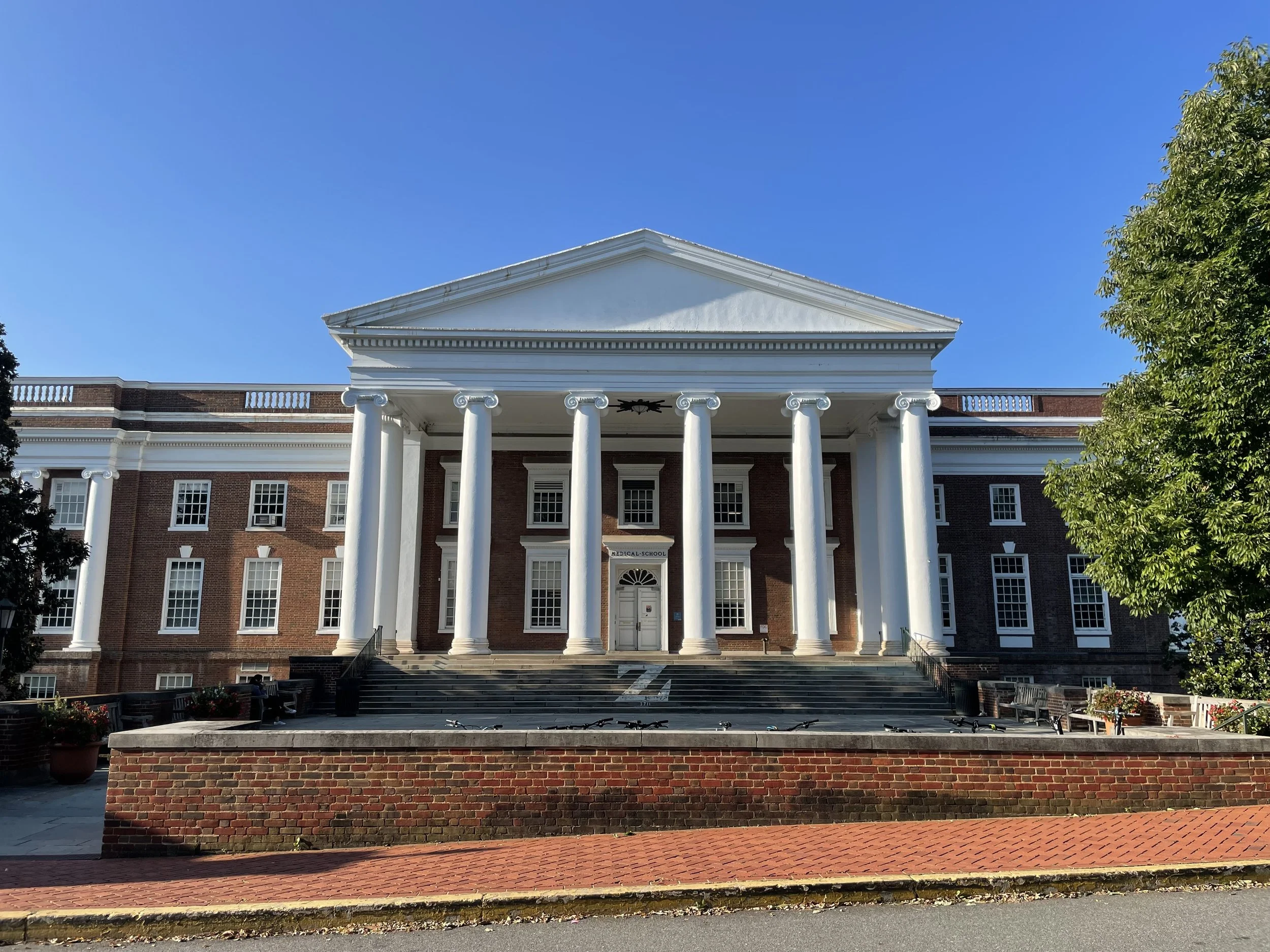Invited talk at UVA neurology rounds
This was a new one: discuss our - let’s be honest - pretty basic science at the UVA neurology rounds. “What’s the audience?”, I asked. “Well, neurology residents.”, they said.
How do you capture complex topics like genome-wide association studies and whole-slide image scanning, and our approach to investigating the genetics of ischemic stroke?
UVA Medical School
The talk should include some learning objectives covering large scale genetics studies, concepts of post-GWAS studies, knowledge about our Athero-Express Biobank Study, and a bird’s eye perceptive of the research process going from a clinical problem towards finding answers through the laboratory bench.
I decided to briefly touch on how we discovered DNA (thank you Rosalind) and how this discovery led to - perhaps the biggest ever - international study on the human genome and the first-ever (?) USA-UK joint-statement-presentation. Through this massive project we discovered over 100 million sites in the human genome that may vary between you and me. These are the subject of study in those GWAS. Ultimately, many believe results from those GWAS can be used to construct polygenic scores that can help in the prediction of who may be at-risk of disease in the future.
Since our lab’s focus is on the genetics of atherosclerosis, specifically how genetic variation impacts plaque morphology and molecular signatures, I shared our story on the effort to improve plaque phenotyping. When we have more accurately and reproducibly determined plaque morphological features we will be better able to determine if and how genetic variation changes those.
All in all this talk was an interesting exercise in ‘translating’ my translational science world towards an audience that is not perse well-versed in our daily jargon. A humbling experience and great honor to present our work.

